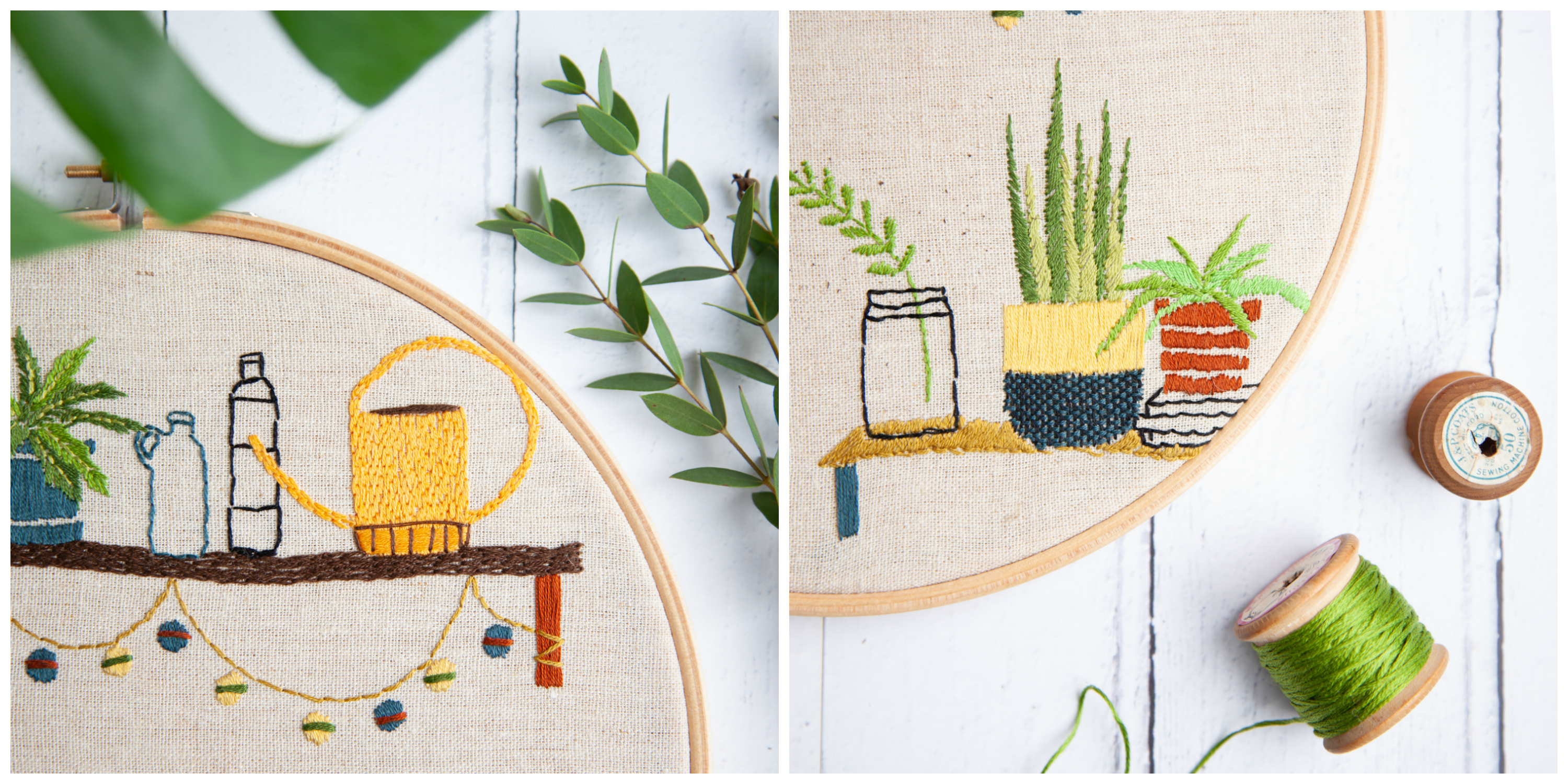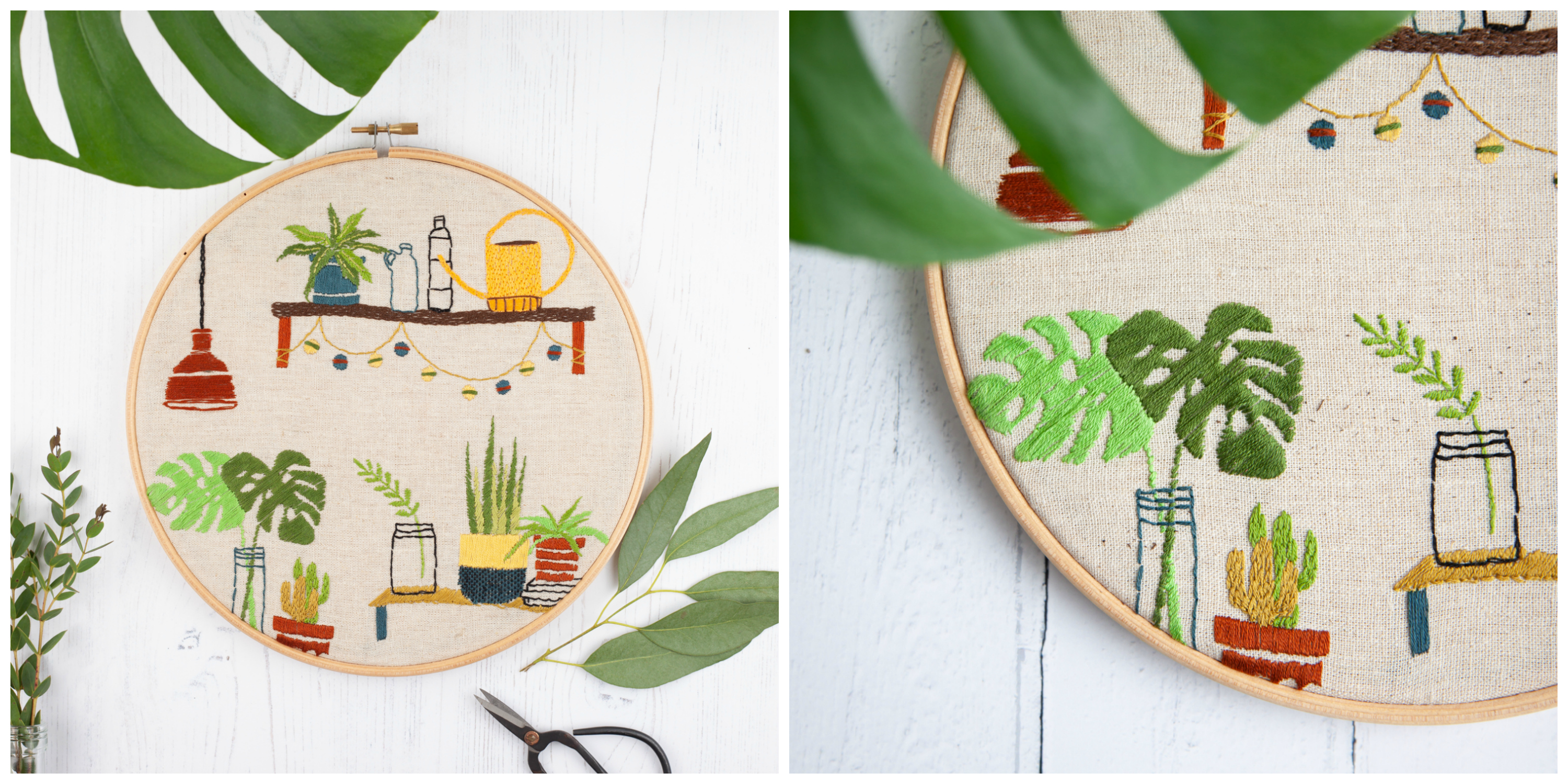
Linen has been my very favourite fabric for hand embroidery for as long as I can remember. But it has a long and interesting history too – did you know that it’s been around for thousands of years? It has always been an expensive fabric which is due to the way it has to be harvested, processed, and woven. Linen was heavily used in the Mediterranean in the pre-Christian age and was sometimes used as currency in ancient Egypt. Egyptian mummies were wrapped in linen because it was seen as a symbol of light and purity, and as a display of wealth. Some of these fabrics, woven from hand spun yarns, were extremely fine and the fineness of the yarns in them simply can’t be reproduced today using modern methods.
The flax plant, from which linen is made, is one of the oldest agricultural plants in the world. An archeological dig at the site of Neolithic lake dwellings in Switzerland revealed the charred remains of food prepared from flax seed, together with remnants of linen threads, ropes, clothes and fishing nets. A little more recently, but still more than 5000 years ago the Egyptians named flax “woven moonlight” due to what they considered to be its beauty, while a little less poetic, but perhaps more apt name, is the Latin one “linum usitatissimum” – “extremely useful” plant.
Flax blooms in clusters of bluish, navy-blue, and, more seldom, violet, rosy and white flowers that open up at dawn and close and fall at around noon when heat sets in. Each flower blooms for a few hours and, as an aside, bees can collect enough pollen and nectar from one hectare of flax field to produce 15 kg (well over 30 lbs) of honey. Flax for linen is grown around the world, though the quality of the crops varies greatly. It’s generally considered that flax grown in Belgium and other areas of northern Europe is the best flax for making linen.
The quality of the finished linen product is also dependent upon harvesting techniques. To generate the longest possible fibres, flax is either hand-harvested by pulling up the entire plant or stalks are cut very close to the root. After harvesting, the seeds are removed and the fibres are loosened from the stalk which is a long and complicated process involving several stages. Once separated, the shorter fibres are combed away, leaving behind only the long, soft fibres which can then be spun into yarns and woven or knitted into linen fabric.

There are various types of linen suitable for embroidery. If, for example, you’re planning a counted cross stitch project, then you’ll want even weave linen, whilst ordinary surface embroidery you’ll want a firmly woven, lighter weight fabric that’s still strong enough to support the weight of the stitches and doesn’t allow any stray threads to show through from the back.
As always, cost and quality go hand in hand and if you’re working on an important piece that you want to stand the test of time then you’ll be concerned to choose a good quality linen. And I really do mean stand the test of time – in the British Museum are pieces of mummy linen at least 6000 years old!
The final reason I love linen so much is because the more it is washed, the softer and more luminous it becomes. That luminous quality is caused by nodes on the flax fibers, which reflect light. Freshly washed linen has a naturally clean fragrance and gives you a sense of well-being. Do remember to remove your linen from the washing line while it’s still damp. If linen dries thoroughly, it becomes brittle and takes several hours to recover its natural moisture and full flexibility. (The natural moisture content of linen is between 6-8%. Linen dried beyond this point will have to re-absorb moisture from the air before it becomes soft and supple once more.)
*Article originally appeared in Bustle & Sew Magazine
Leave a Reply